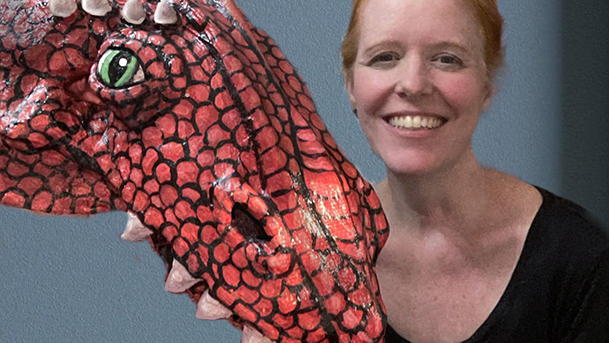Greetings, travelers, and welcome to another stop in the Otherworld. Recently, we here at Tellest had the opportunity to look into the world of author Carolyn Watson-Dubisch, the author and illustrator of the wonderful story The Dragon in the Closet, amongst many others. We were afforded a chance to speak with Watson-Dubisch to learn more about the worlds she’s creating, the stories that have inspired her, and what it’s like putting together such catching and captivating tales for children. Read on to learn more about this talented storyteller!
Tellest: Hello Carolyn! First, let me just offer up a huge thank you for sharing some of your time. As a busy storyteller and illustrator, I’m sure that it’s hard to pry yourself away from spinning new yarns and introducing new types of magic to the world. You’ve done a lot already, and I can only imagine that you’re driven to do so much more, so I appreciate you spending some of your limited time talking with me. I’m excited to help introduce you to more potential readers!
Carolyn Watson-Dubisch: Thank you for talking with me. I have always felt privileged to be able to share my art and writing with children and hopefully spark their imaginations and inspire them to do the same.
T: One of the things that is most interesting for me is finding out just how a storyteller became drawn to that passion. The start of the creative journey is always an exciting part, and knowing what created a foundation for our favorite talespinners can be so enlightening. When you were growing up, did you have a favorite author or comic illustrator that you found yourself attached to? Or was it a more personal experience?
CWD: Writing for me started with reading, like I think it does for most people.
As a child I grew up with a mother who was gravely ill. She was diagnosed with cancer when I was 9 and died when I reached age 18. My home life was quite stressful and volatile, so books offered a great escape. I would sit in the branches of the huge blue spruce tree in our front yard in New York and immerse myself in a book. I read fantasies like “The Chronicles of Narnia” and couldn’t help but imagine a magical world in the cupboard or under the rug.
I also loved horror and read a huge number of Stephen King’s books (and still do). Honestly, I read everything I could get my hands on from Calvin and Hobbs to Watership Down. I, of course, still regularly read books and comics.
Right now, I’m reading a graphic novel called “Echo” by Terry Moore and one called “The Winter Men” by Brett Lewis. It’s important to read if you want to write. I also read A LOT of children’s books each month and help run a book review group for children’s book authors online.
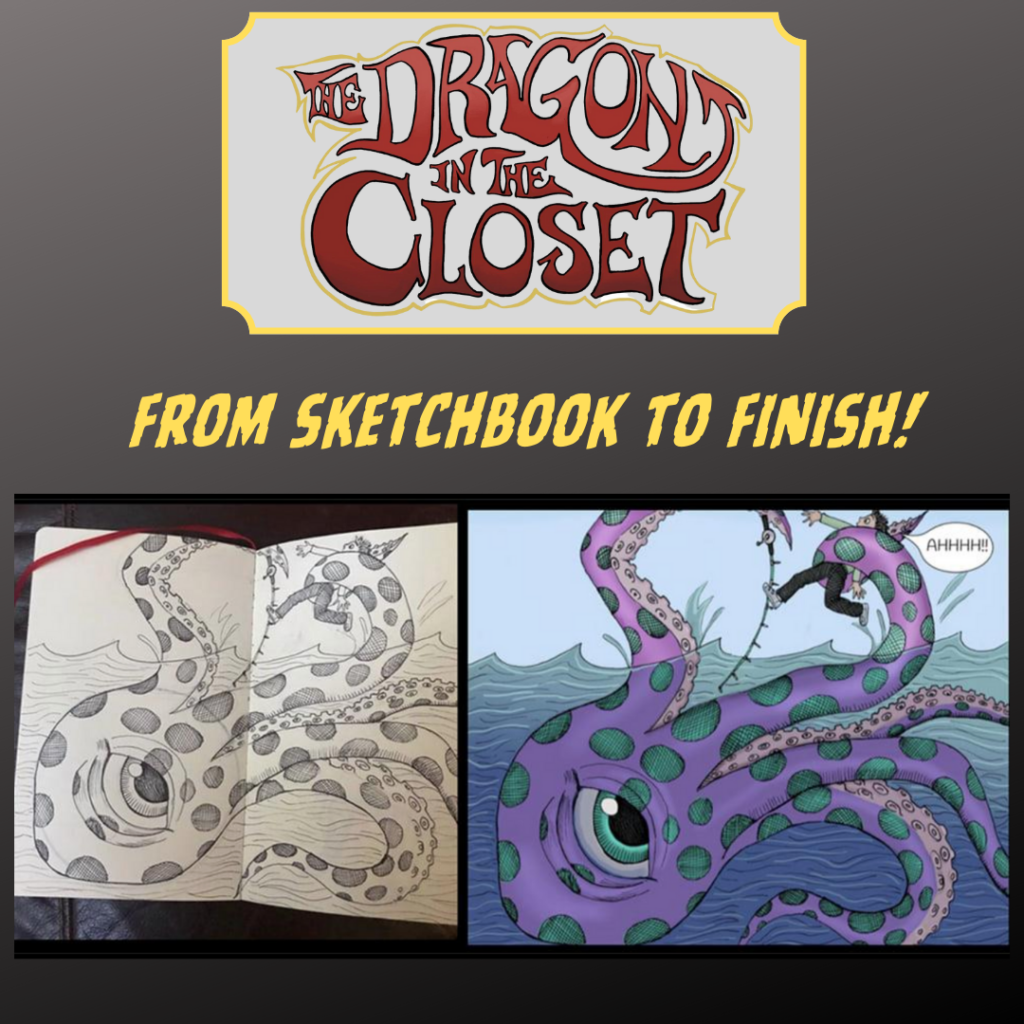
T: As well-studied as you are—and of course, as talented as you are with your own work—you must see all sorts of stories that are built with kids in mind. Some have whimsical stories, some have spectacular art. There’s no lack of these stories to find. But certainly, there are some that stand out compared to others. What do you think makes the difference between a great children’s book and a good one?
CWD: I think with children’s books great art can carry a mediocre story, and mediocre art can be carried by a great story or concept, but in the end both things have to be great to really stand out. This is such a flooded market that it takes a lot to get noticed. On the other hand, as someone who has raised three kids, I can tell you that a new book in the house is gold. Even if it’s average, my kids loved it. Some of my favorite books are the ones by Don and Audrey Wood, like “The Napping House”. A brilliant building rhyme with art that helps tell the whole story.
T: That brings me to another thought that I’d love to hear your opinion on, as you have so much more experience with children’s stories than I do. For the sake of children’s books that are aimed at a certain age, would it be your concept that most of these stories are strengthened by a rhyming structure? Does it benefit the storyteller to always aim for something like that? And with that in mind, is it perhaps something that sort of goes with the idea of including pictures in the project? For instance, when your material ages up enough to lose the pictures, is that when you believe the story should ditch a rhyming structure (or vice versa)?
CWD: The reason behind telling stories in verse to small children is that it helps the reader. The reader in this case being the older child or adult who is reading the book aloud to a baby or pre-reading toddler. Another approach that works is short simple sentences. As children read on their own, rhyming becomes less helpful and less necessary. It’s useful in short bursts, especially in fantasy, to have a magical character that speaks in rhyme or when a spell or nursery rhyme is added into a larger story. Rhyming is fine as long as it’s for kids four years old and under.
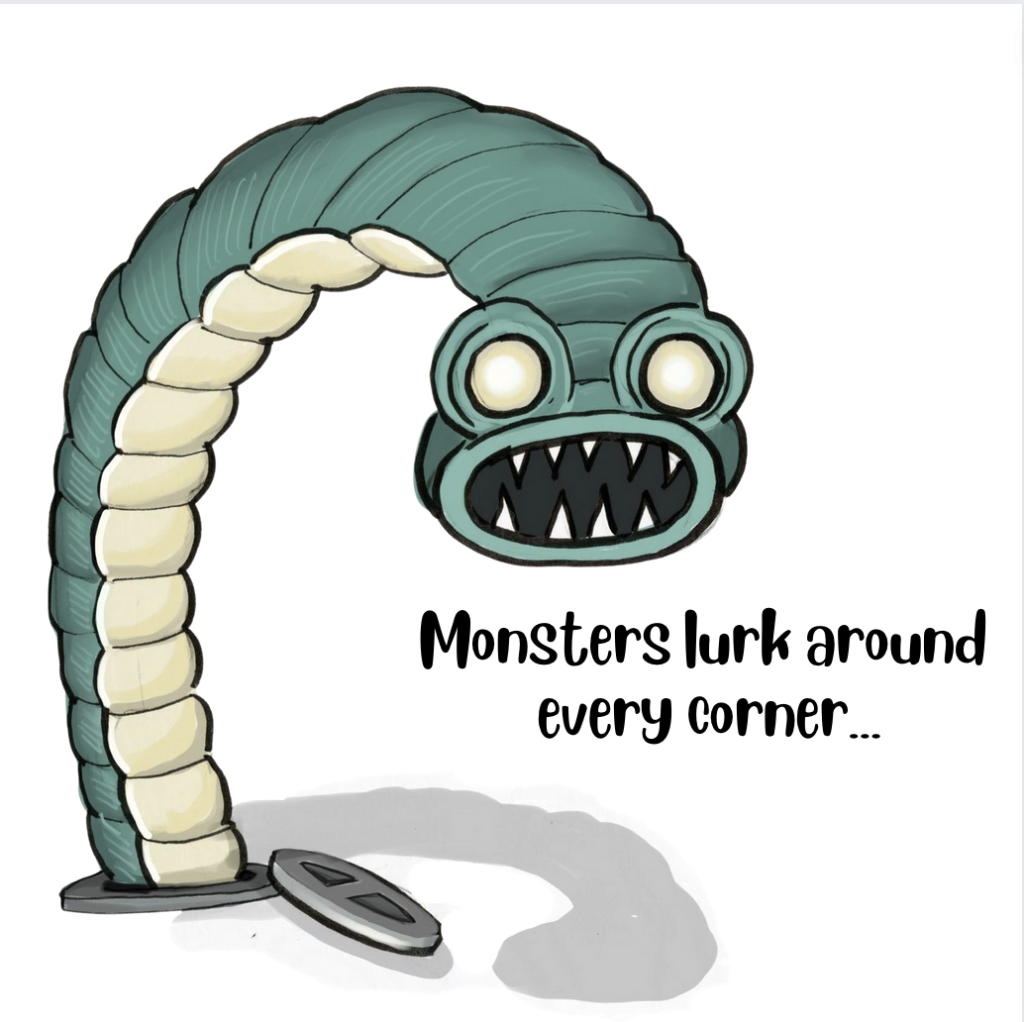
T: You’ve got a whole slew of books that you worked on, and while we started you off by promoting The Dragon in the Closet, and we’ll certainly be getting to that, I’m also interested in where you began. The Dragon in the Closet is the first published work that one can find on your Amazon Author page, but was that the first one you worked on, or had you been honing your skills before that one popped up on virtual shelves, and on its very own website?
CWD: I became interested in children’s books and the children’s market when I was attending school at The School of Visual Arts in New York City in the 1990’s. I took every class that involved creative writing, storytelling and drawing for children’s books.
After school I pursued work as an illustrator and artist. I worked for a variety of clients in books and magazines, and I even designed alien bird men for Star Wars at one point.
I did eventually break into the children’s market, writing and illustrating for magazines like “Highlights for Children”, “Hopscotch” and had a matching game feature that I designed and illustrated for each issue of “Whimsy Magazine”. That feature ran in their magazine for a couple of years.
My first children’s book was released from Pentland Press in late 2001 right after 9-11 (as a New Yorker it was so hard to focus on promoting that book at that moment!).
It’s called “Andy and The Flying Toaster Tangerine”. It’s currently out of print and so are a number of my other children’s books from the early 2000’s, but that was the first book in my Andy’s Adventures series of children’s books.
I also have a comic book series (and webcomic series) called “The Horribles” about a cyclops girl, a young witch, and a character called “Creature” (short for The Creature from Under the Bed). The series was released from 2008-2013 and is still available in a large volume and online as a webcomic. “The Horribles” is in black and white and full of gothic humor inspired by the Addams family.
“The Dragon in the Closet” began as a webcomic I started writing and planning in 2018 and finally launched during the pandemic. In fact, most of the books you see now attached to my name on Amazon were launched in the last few years since lockdown.
T: Was there something therapeutic about the way that you created the stories that are gaining popularity on Amazon? Certainly you had experience in the children’s market before, but the long-form style of things like The Dragon in the Closet must give you an interesting outlet, and also a way to better connect with fans.
CWD: The reason I like writing comics is that it gives me a chance to write longer, more involved stories. A chance to weave together various plot lines is a more exciting way to write than what I can usually do in a picture book. I’m thrilled that there’s such interest in my books on Amazon. It’s very encouraging.
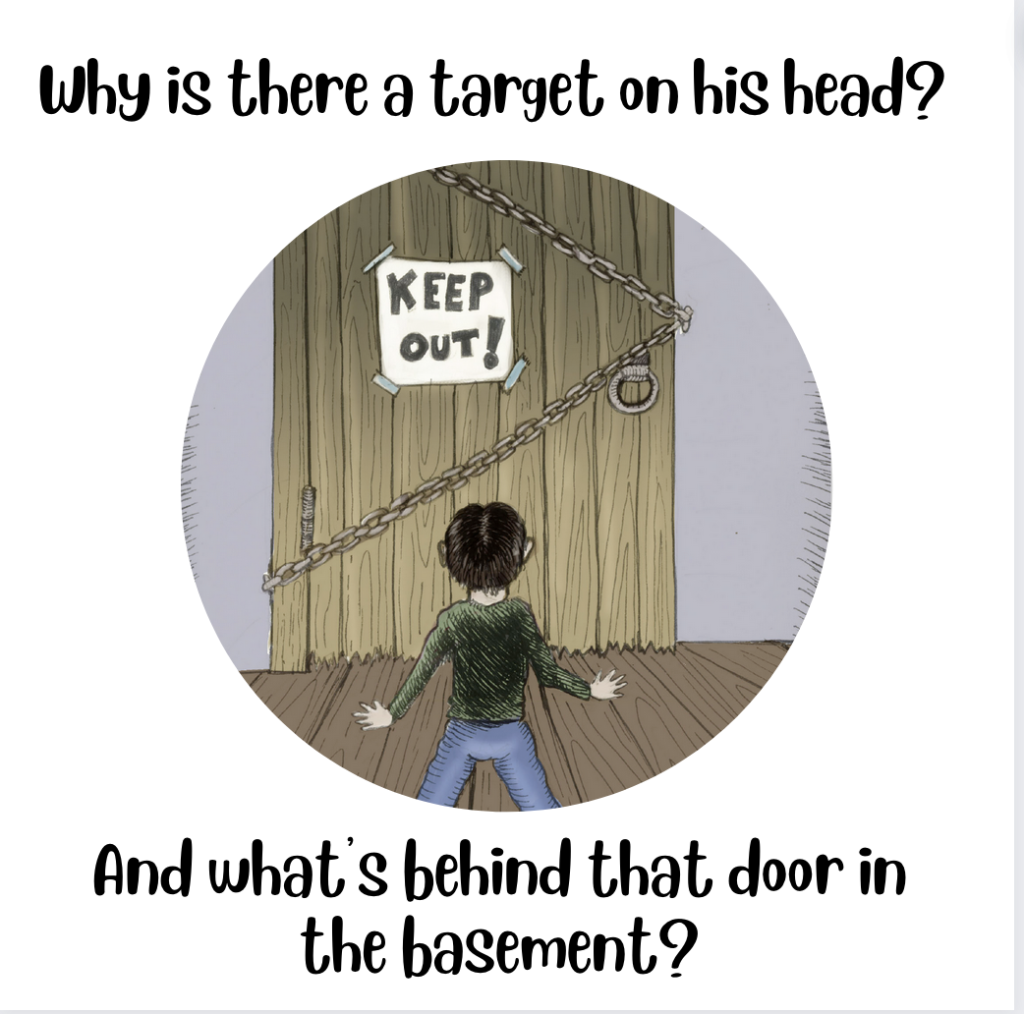
T: To some point, by their nature, comics can kind of go on forever. Even if the story eventually ends, there are little threads that a storyteller can pull on to find new material that may not have been apparent to them when they were first working on their tale. Have you been tempted to write any side stories? Has anything surprised you in the process of getting this or any of your stories out into the world that bears further exploration?
CWD: I have written side stories on one of my comic book series called “The People That Melt in The Rain”. It’s a YA series I wrote that was illustrated by Mike Dubisch. Generally, though, no, I don’t write more because comics are SO, SO much work that I really spend the whole time focused on getting the primary story complete and published that I just want to be done by the end.
T: The Dragon in the Closet is a quirky kid’s comic, but in some ways, it isn’t for the faint of heart, with the threat of death and doom around every corner! Did you know early on that you would be playing with such dire stakes early on, or what is something that you just felt drawn to for the dark and twisted fun it is?
CWD: Our world is full of darkness and light. Without the darkness we couldn’t see the light. I try to write stories that skate the edge between the two.
I began several years ago drawing images of children being chased by monsters in my sketchbook. I teach art to Elementary school kids, and they would see my sketchbook and get so excited. I decided to write about the images I was drawing.
At the time I was struggling with my youngest daughter. She was suffering from depression and suicide ideation. Each day I would wake up and run to check her room hoping she hadn’t done anything in the night.
I created the character of Nana (the witch) in the story to be the protector and guardian of her nephew, Orin who is cursed. She shields him from the monsters and does all she can to keep him safe. She is who I wish I was at that time. The woman who can actually see the monsters haunting their child and chase them off.
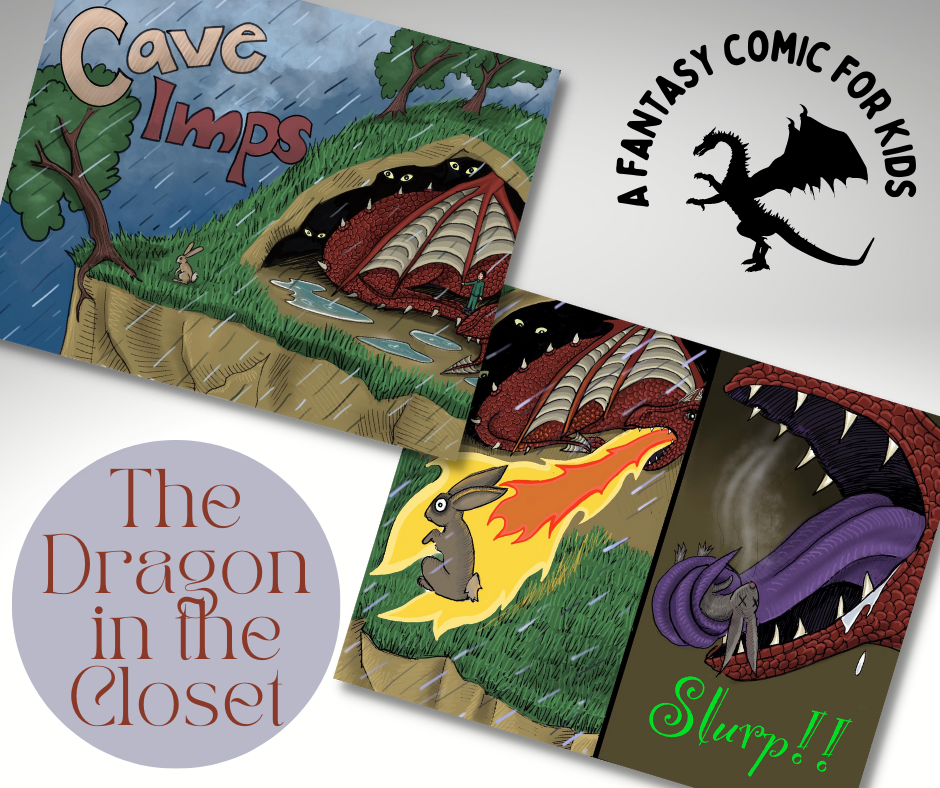
T: There’s a relentlessness to Nana, but there’s also moments where vulnerability shines through as well. She may be able to fend off all the monsters, and she certainly has tremendous power and skills, but even she needs to take a moment to breathe. How do you go about balancing the quirkiness of your story with important messaging that you want your fans and readers to be aware of?
CWD: Nana is just like most mothers I know. She doesn’t breathe. She can’t stop or the house of cards comes falling down. It’s exhausting to watch, but more exhausting to be that person.
Nana’s role evolves in this series. In the first half she’s the savior. She saves Orin over and over and keeps him safe but very soon in the story that changes. She becomes the antagonist who tries to hold Orin back from what he needs to do to change his destiny.
My primary goal as a writer is to entertain and tell a good story. The underlying message for this series is that you don’t have to accept the path in life that is laid out for you. Everyone lives in a little box that they either built or someone built for them, but you don’t have to stay in it.
T: With a long-form story like this, that’s evolving alongside new fans that are drawing closer to it and sharing their feelings, do you ever find yourself straying from the original message? Or do you add through-lines that you didn’t originally conceive because of feedback or questions you might receive?
CWD: The message is so embedded into the plot I have planned out that it’s hard to imagine I could stray away from it unless I reworked it completely. I have, in the past, changed the course of a long running webcomic based on feedback and input from fans—even adding a character and several chapters to fill it out.
It hasn’t happened yet with “The Dragon in The Closet”, probably because the audience for this one is grade school kids and not teenagers. Little kids don’t know their power yet, so I don’t expect that kind of input from them. However, if feedback from kids became very vocal, I would definitely give it consideration.
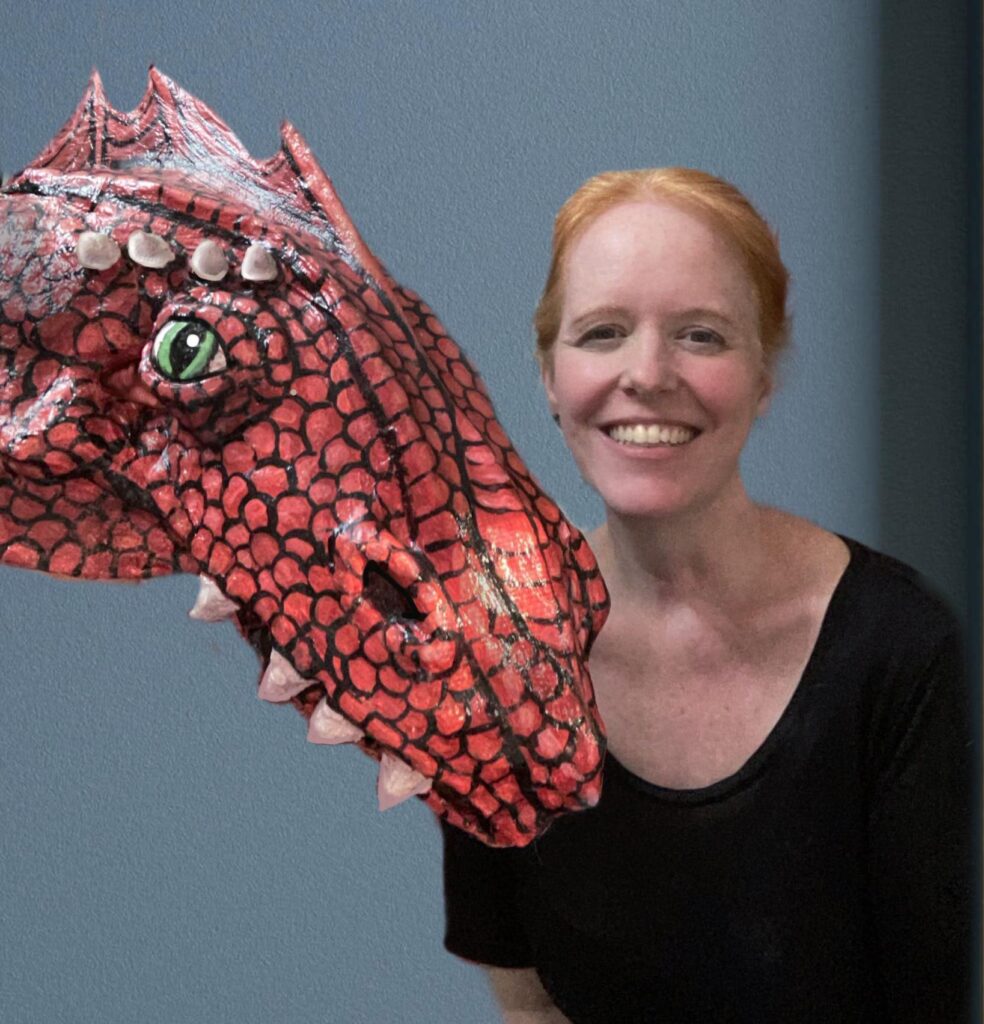
T: I’m most familiar with The Dragon in the Closet, which you have written plenty of content for. But you’ve also written and illustrated fifteen other stories that focus on the stories you’ve wanted to tell, in addition to a handful of others that you illustrated in order to help other talespinners. Would you say it’s difficult to juggle such a large number of stories? Do you still work on any of them? It appears that The Dragon in the Closet still has regular updates!
CWD: I’m involved in a lot of groups for writers and artists online. One of the most recommended practices for getting work done is to rotate projects. In other words, work on everything at once. In a single week I work on three or more projects. It can be stressful sometimes, but it also keeps me from getting stuck and tired of a project.
I work on two webcomics with weekly updates; “The Dragon in the Closet” (which has been running for over 3 years) and my sci-fi kids comic “After the Robots Died” (only running for a year or so). These are usually scheduled updates and before I launch a webcomic I have 6 months of pages ready. Then I compile pages and release them in issues. This new book of “The Dragon in The Closet” has three compiled issues and half of issue four making it more of a graphic novel. It is the first half of the whole series, which means I am halfway done!
I also just finished a book this week with writer R.H Bynum called “The Adventures of Goodie and Kookie” which should be coming out in a few months now that the art and editing have been completed, though I don’t know the publisher’s schedule on that one.
As a professional illustrator I often work with other writers.
My next children’s book is wrapping up as well. I illustrated “Jabberwocky” by Lewis Carroll for my series called “Scary Stories for Kids”. It should be out by late March or early April (so very soon!)
T: You mentioned that The Dragon in the Closet has what sounds like an end in sight. When it comes to something that is so well-regarded, is it difficult to plan for the end? Or is there a new sense of liberation knowing that you can explore in other directions once that time comes?
CWD: When I started “The Dragon in the Closet” I had a general story arc worked out. That storyline will be complete at the end of Issue #7. There’s a huge sense of satisfaction that comes from completing a project that’s taken many years. I’m only halfway done but I truly look forward to it. Since I work on so many things at once I never wait to start something new. I just jam it into my schedule.
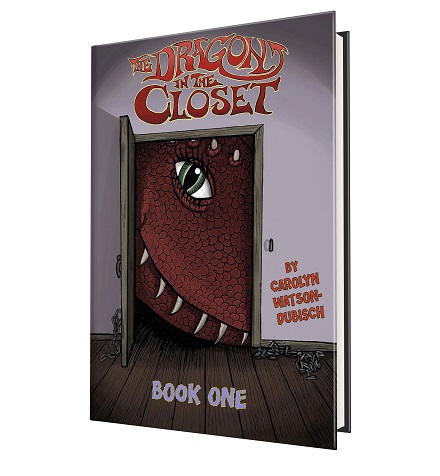
T: You must have a busy schedule indeed. Are there any moments where you just have to throw your hands up and step away for a time to recharge? What do you do during those times?
CWD: I am fortunate enough to live near the ocean, so I like to walk the beach in the evenings with my husband and our dog. I also like to read a lot and work on my sculptures. I make masks and sell them to clients online, so I always have something I’m sculpting.
T: It’s already a rare experience to have a single book or issues of a comic released, but you’ve got a catalog that would make most accomplished writers jealous. On top of that, you’ve released your stories in languages outside of English. What was it like planning and publishing your book in Spanish and Japanese?
CWD: I have been living in Mazatlán, Mexico on the Pacific coast for the last few years. We moved here 6 months before COVID-19 showed its teeth. During lockdown I decided to write a children’s book depicting this beautiful city and I wanted it available in English and Spanish. I contacted my friend Jorge in Mexico City and he agreed to write the translation for me. He’s a professional artist, animator, and writer but translation was new for him. He did a fantastic job!
Having a book in Spanish was a natural decision for me because I speak it enough to get by and can communicate in most situations. The Spanish version was quite the success and sold fairly well. I have it available here in Mazatlán in a children’s bookstore in Centro and the children at the local school where I work as an art teacher love it. In fact, I have written another book about Mazatlán and have just gotten the script back from Jorge.
When I was working on illustrating my book “Dragon Stones” a woman in my writer’s group, who lives in Tokyo, was looking to become a translator for Japanese. I volunteered to let her work on my new book. This was a tough language for me to lay out because I don’t know a single thing about Japanese (which as it turns out has two different ways of being written so it’s super complicated). It’s been quite the success however and the Japanese version sells incredibly well. I am thinking of contacting her again for another project.
T: And while we’re talking about your accomplishments, we have to talk about your awards! You’ve amassed quite a bunch since you’ve begun creating your tales. Did you think that you would find such accomplishments when you began this journey?
CWD: I think everyone who becomes a writer hopes to receive some accolades someday. It took me a long time. I started in this field in the late 1990’s and most of my awards have only happened this year except for a comic book series I wrote called “The People That Melt in the Rain” that was the second-place winner of “Small Press Idol” in 2010. (Small Press Idol was an epically long and involved comic book competition with many stages modeled after the American Idol competition).
I’m thrilled to be getting this kind of attention. One thing I am slowly learning is to take a moment and celebrate your wins. Life is challenging and we should always embrace the times when things go our way!
T: Would you say that securing literary awards should be something that an aspiring storyteller should aim for? Or is there another metric that you think better identifies a level of success or personal satisfaction?
CWD: In the past I have never much concerned myself with winning awards as a goal. They seemed irrelevant to my work and what I was doing. Then I started winning a couple of awards, and it’s, well, a rush! It’s so, so exciting. It’s easy to get wrapped up in these awards and what they offer your book in terms of notice on the shelf. I know authors who have entered every literary award they can find with each book they have out. These award contests can cost a lot of money in some cases to enter. So, I am careful to enter each book in a single contest that pays and any free entries I can find. If it wins, that’s fabulous, and if not, well that happens too, but I don’t take it personally. I just keep going.
My metric for success is always my readers. My readers are the ones I focus on and try to keep happy.
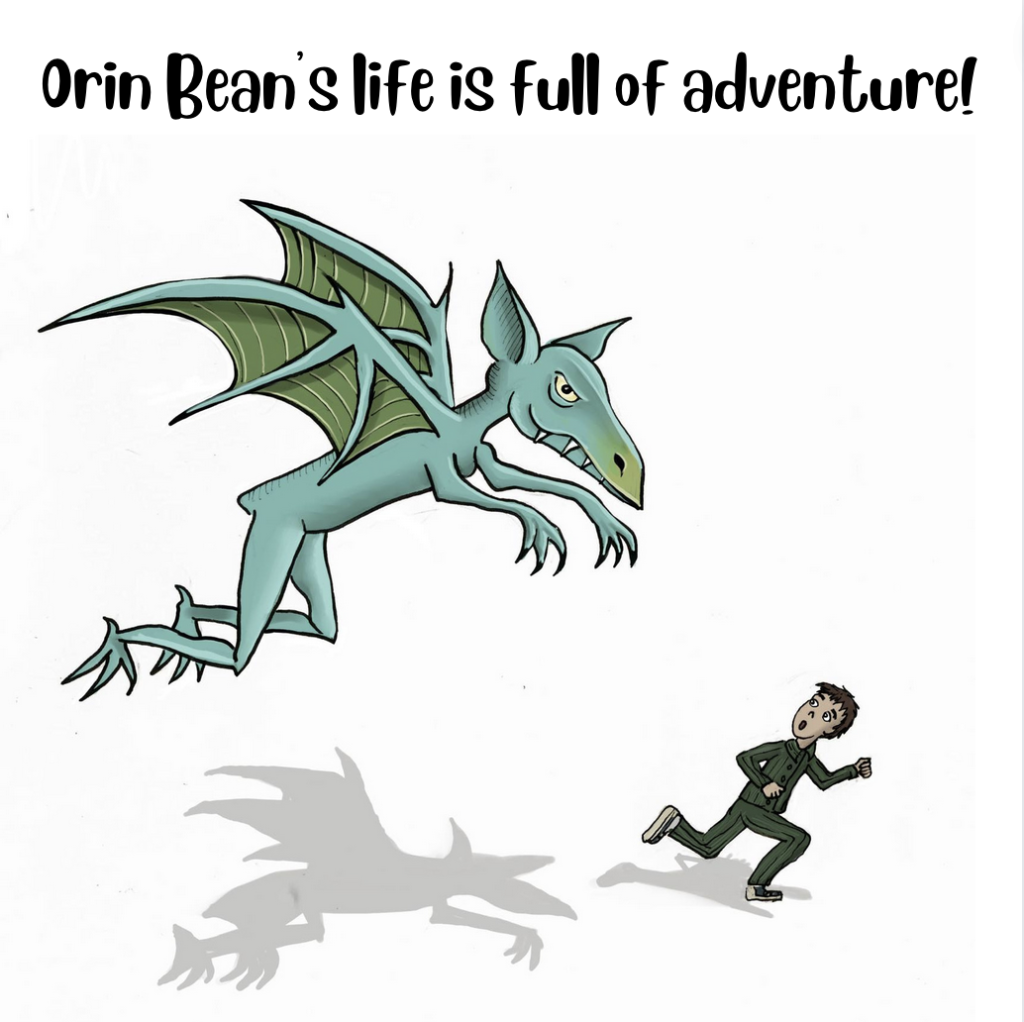
T: You have a site for The Dragon in the Closet, and I certainly encourage readers and those who enjoy your comic to visit there. Do you have any other places online that you have a web presence that you recommend to your budding fans?
CWD: I have honestly been too busy to restore my own website but it’s on my list of stuff to do, however I am online on these sites:
Instagram: @artbycwdubisch
Facebook: The Art of Carolyn Watson Dubisch https://www.facebook.com/groups/170675381469
Twitter: @CarolynWDubisch
Tiktok: @dubischsketchbook
“After The Robots Died” is running as a weekly webcomic on two sites:
Tapas: https://tapas.io/series/After-The-Robots-Died-/info
Tumblr: https://aftertherobotsdied.tumblr.com/
“The Dragon in the Closet” runs on the Comic Fury site here:
https://thedragoninthecloset.thecomicseries.com/comics/first
On AnimaZing Story on youtube they performed the first three issues of the comic and it’s hilarious. Fans can see them here:
Issue one “The Curse”: https://www.youtube.com/watch?v=1UwpQ_yqiVI&t=336s
Issue two “The Amulet”: https://www.youtube.com/watch?v=zeQL7_Os6ro&t=11s
Issue three “Dragon’s Journey”:
https://www.youtube.com/watch?v=FWFNbZiT47g&t=210s
T: Thank you, Carolyn, for spending time with us and talking about your books and your process. It was great to talk to someone who not only writes her stories, but also illustrates them, and it was fun to get into that head space with you!
T: I would like to thank Carolyn once more for sharing some of her busy schedule with us and illuminating us to the many stories she’s worked on. There are plenty of people who will fall in love with her works, and the one we recently focused on is a great place to start. Check out The Dragon in the Closet, Book One on Amazon today!
Michael DeAngelo
Latest posts by Michael DeAngelo (see all)
- Fantasy Promo – Quinine - July 25, 2024
- Sigil Art – Grim’s Hold - July 24, 2024
- Fantasy Promo – Light the Shadows (Under Elfhame’s Stars) - July 24, 2024
